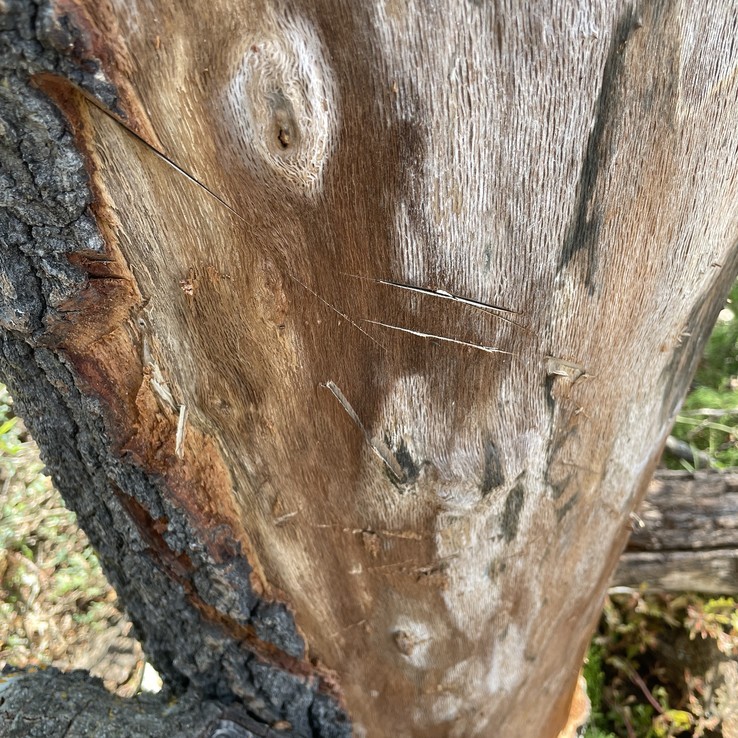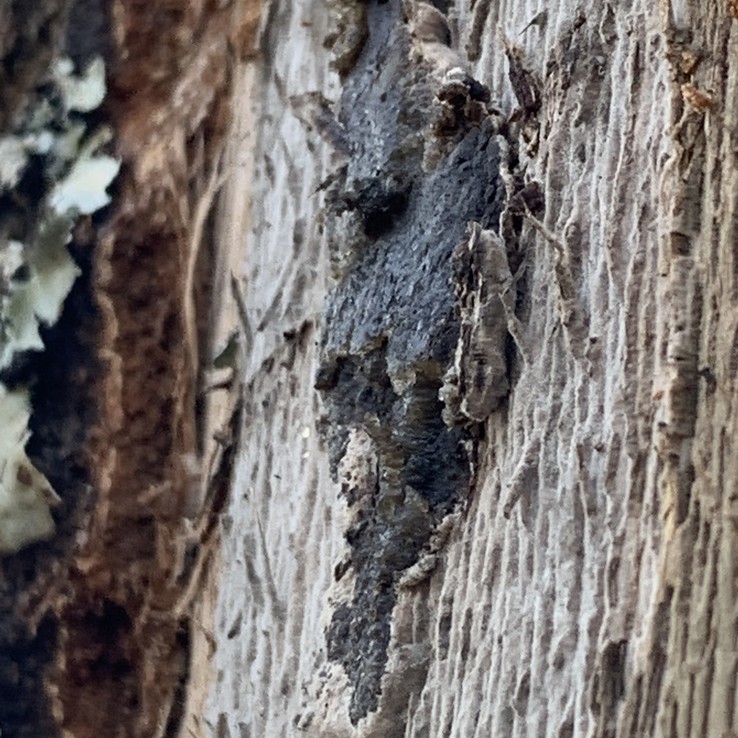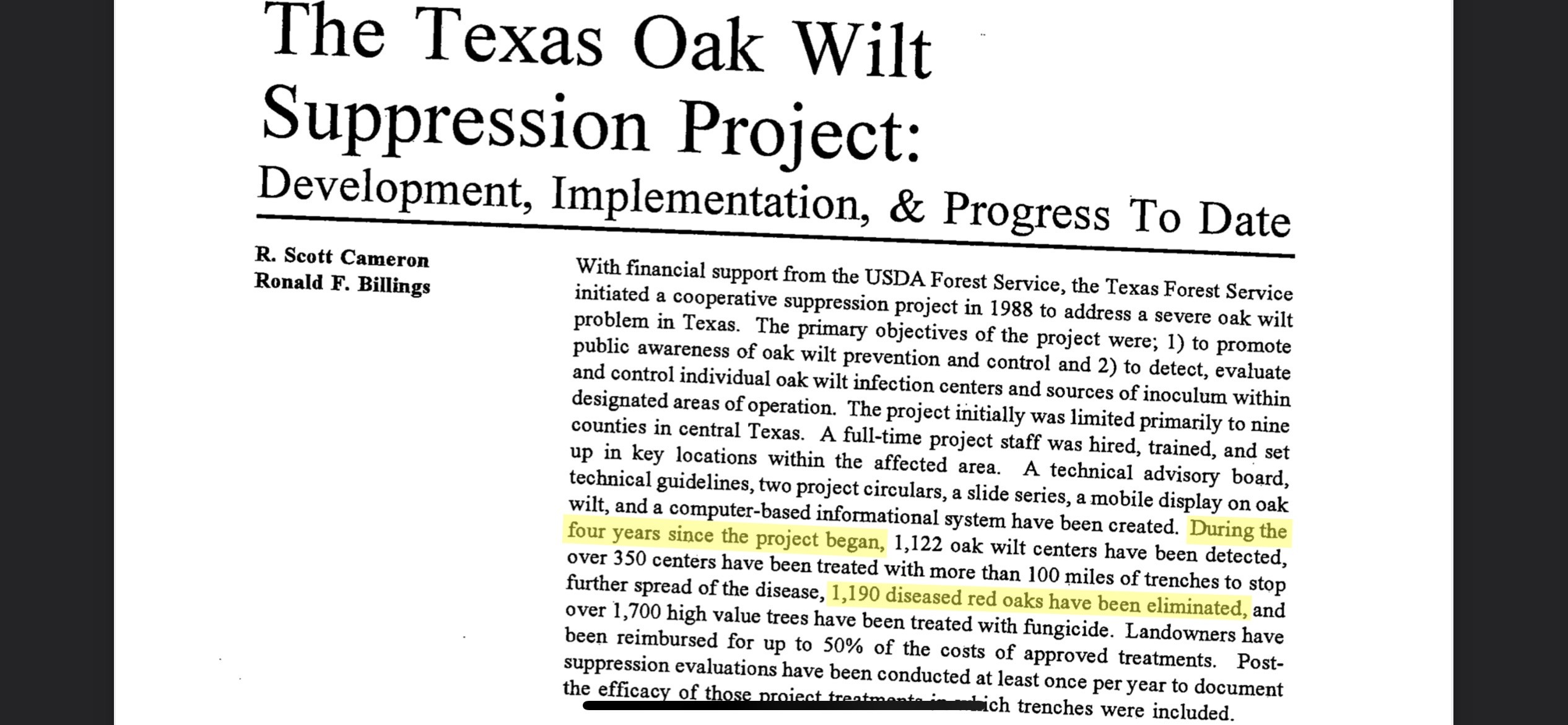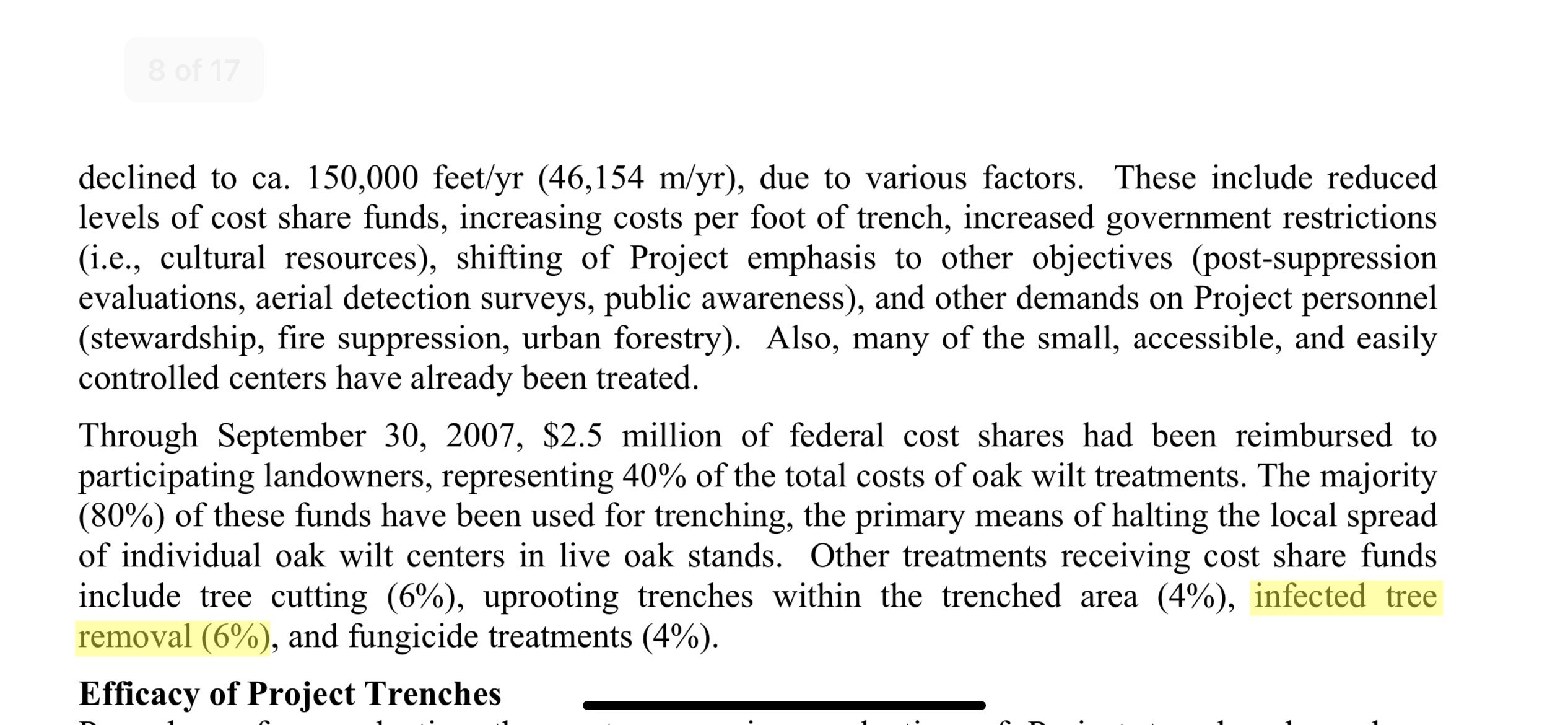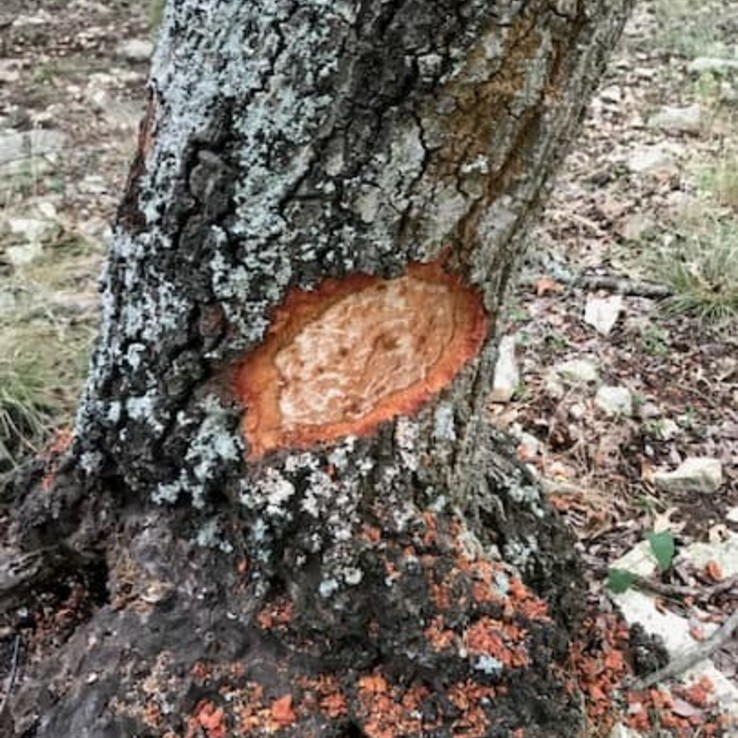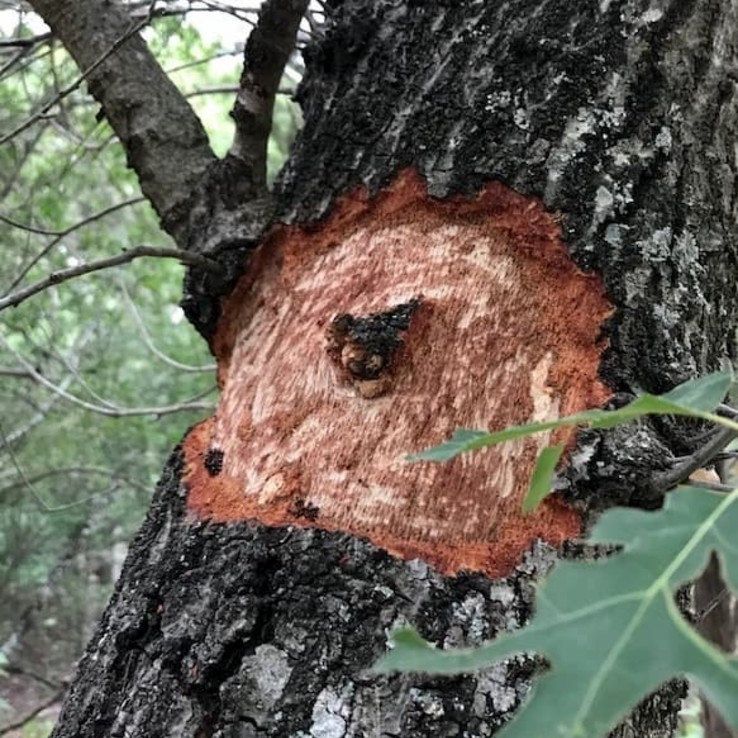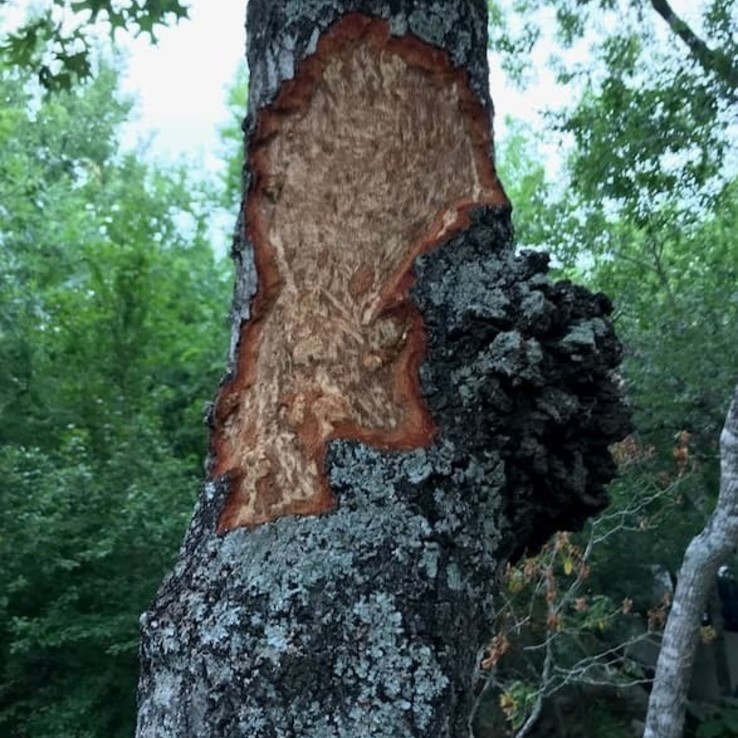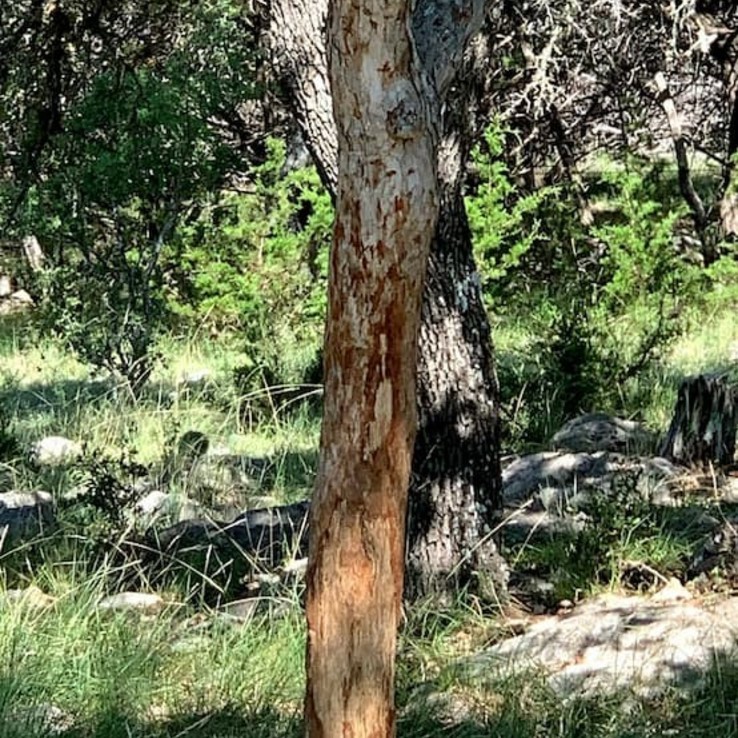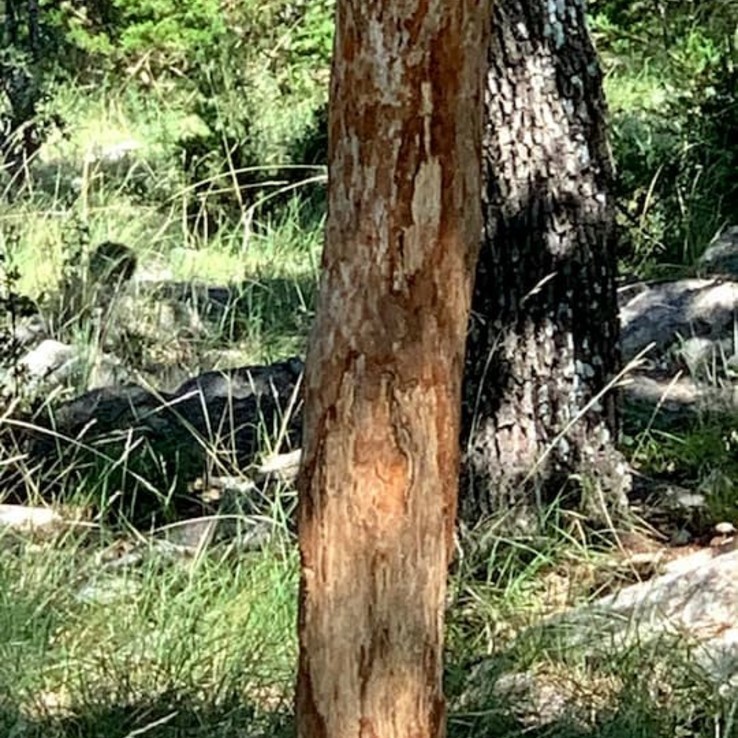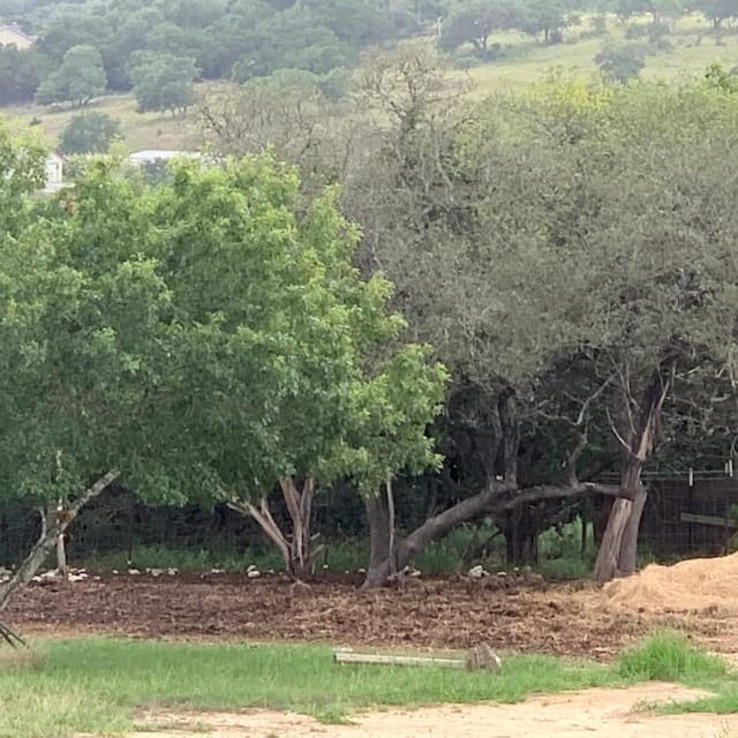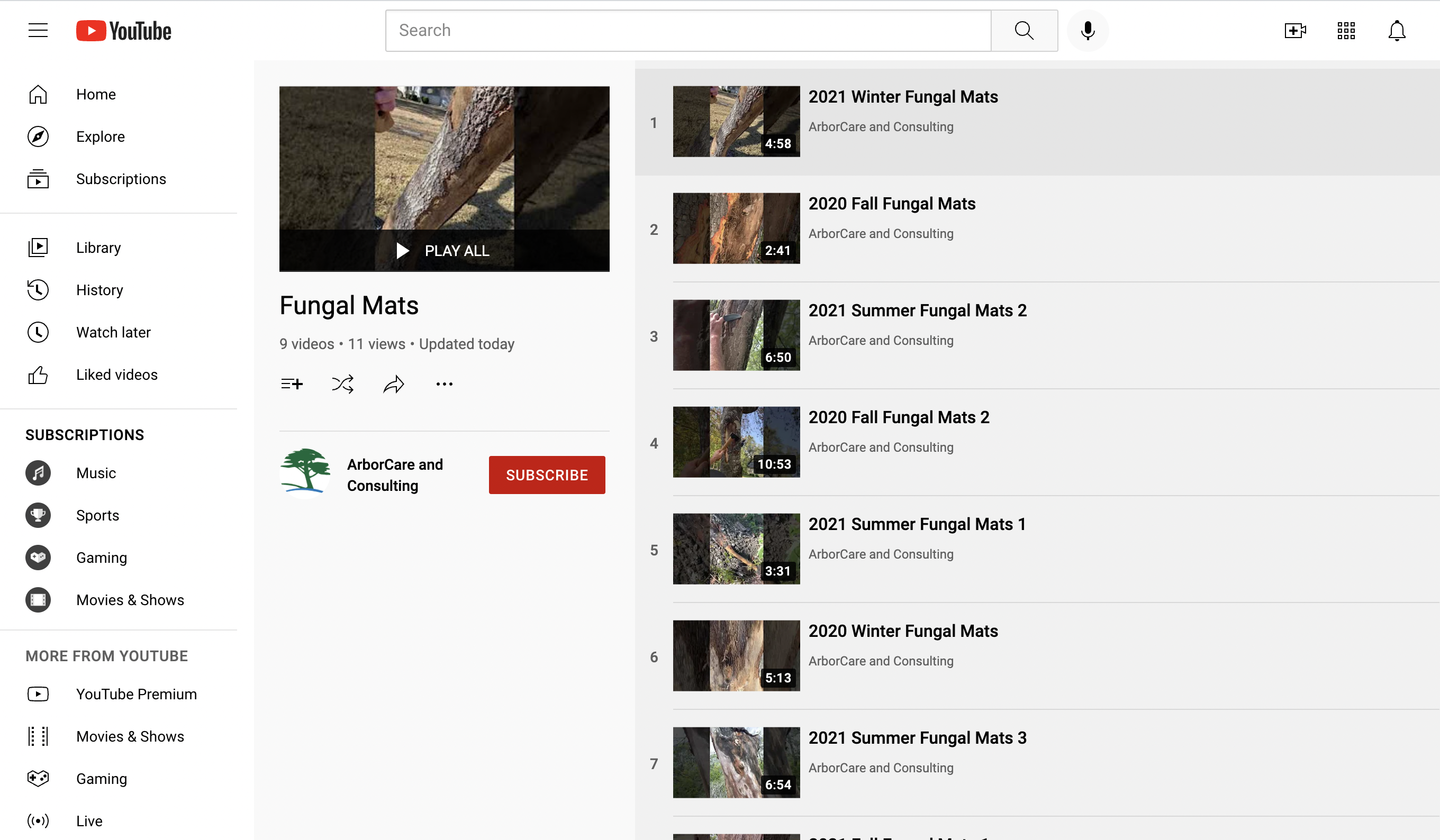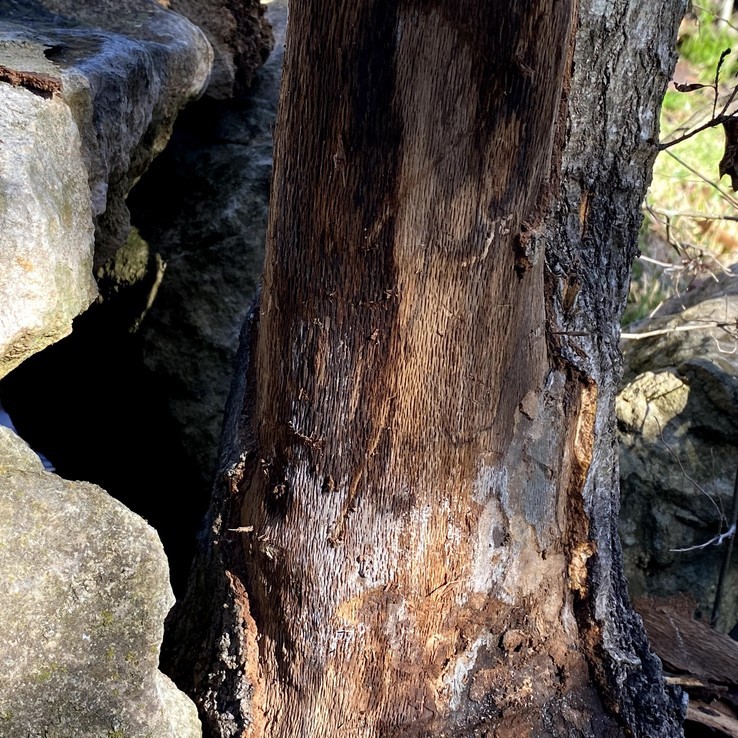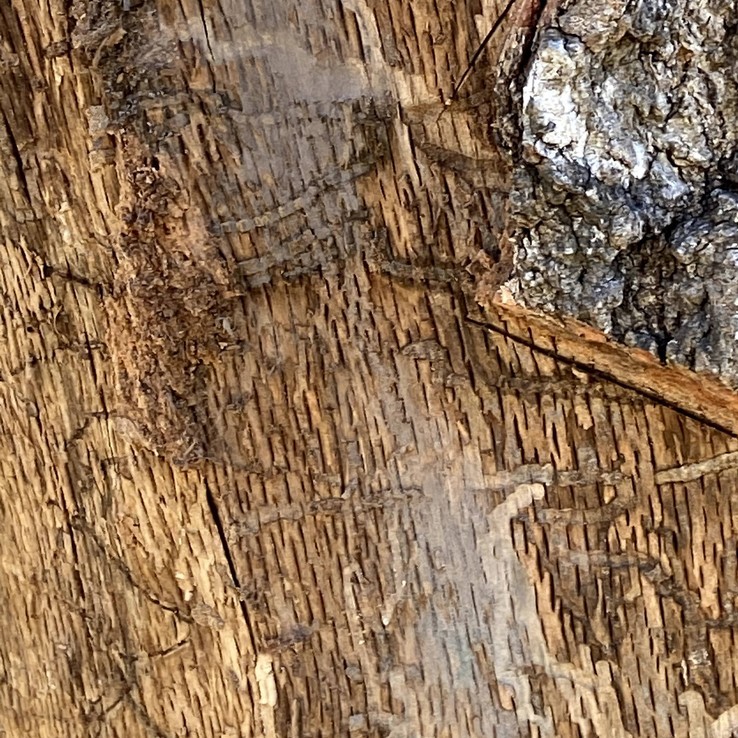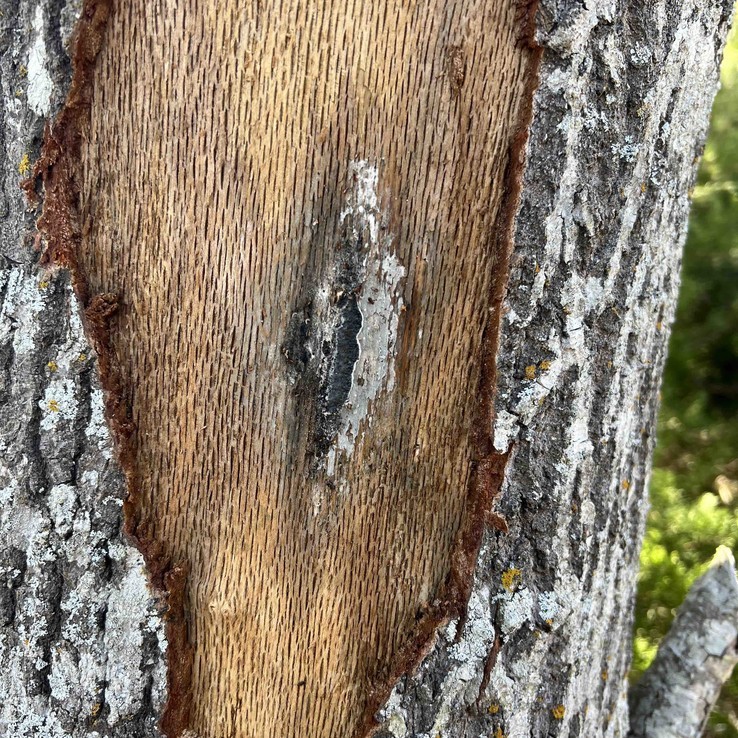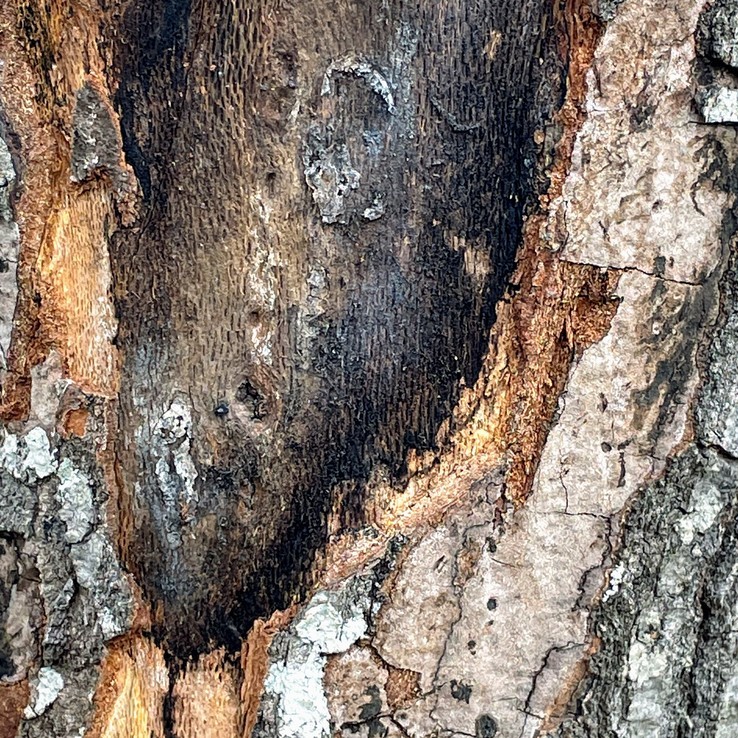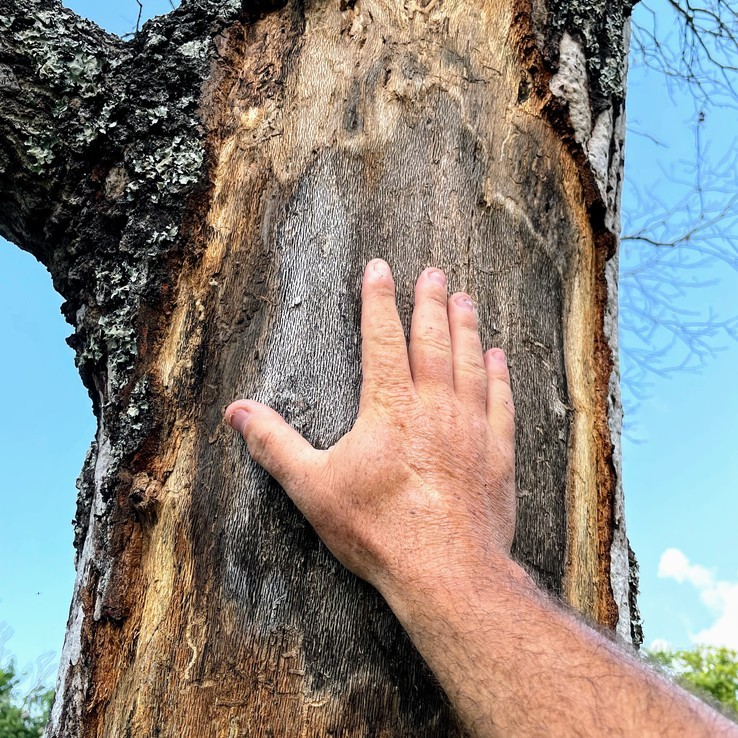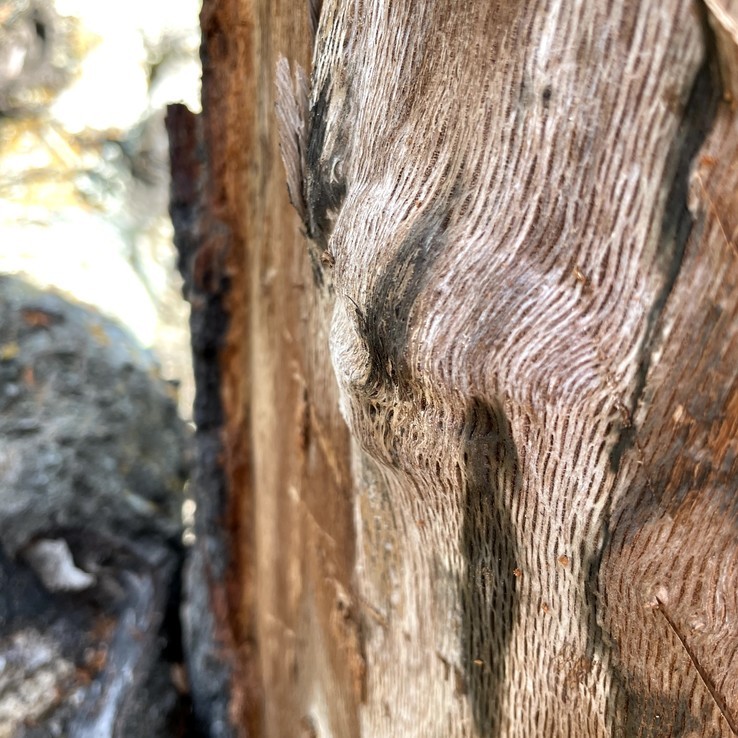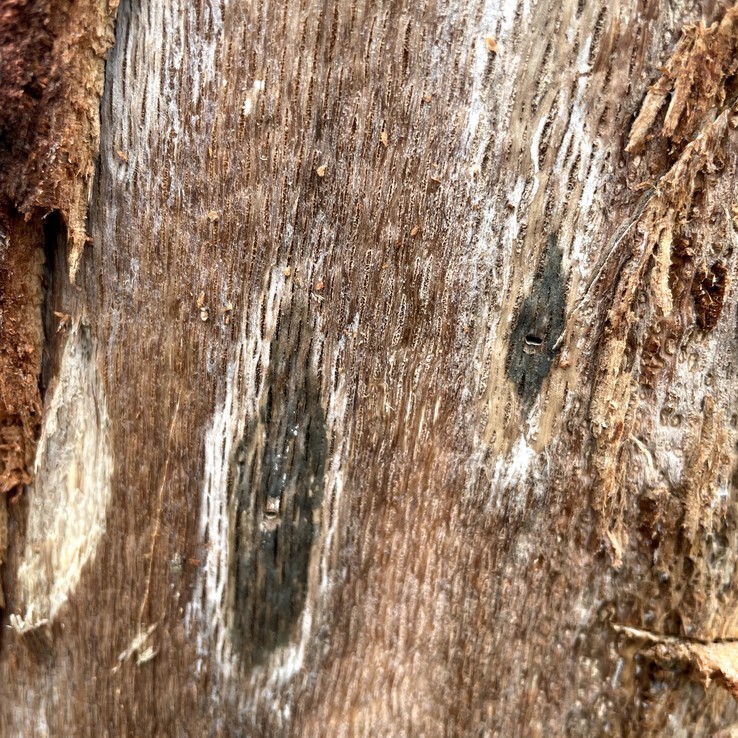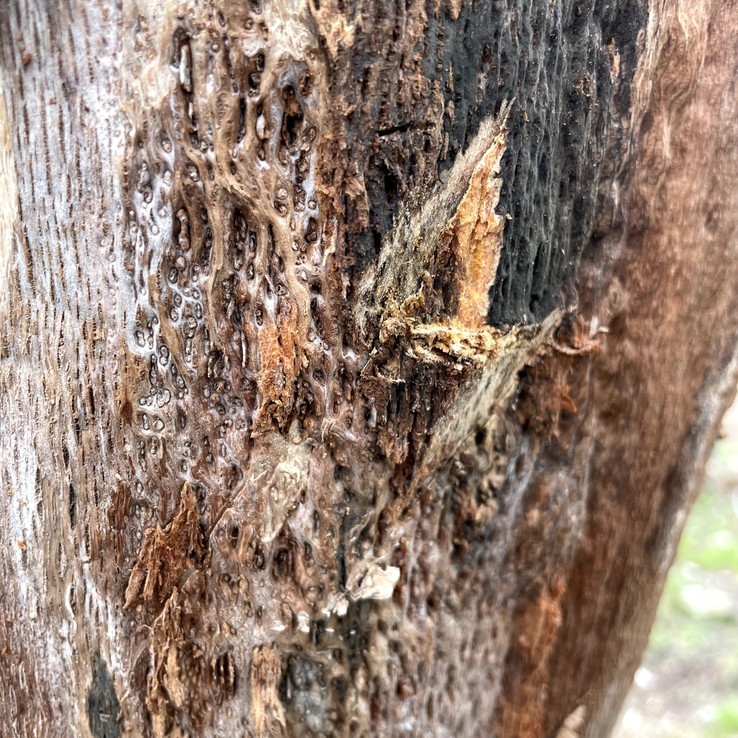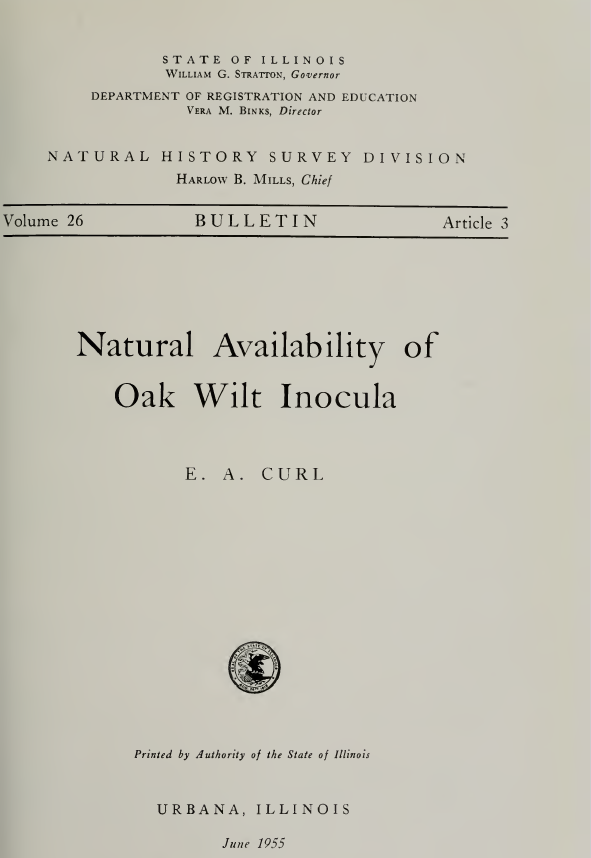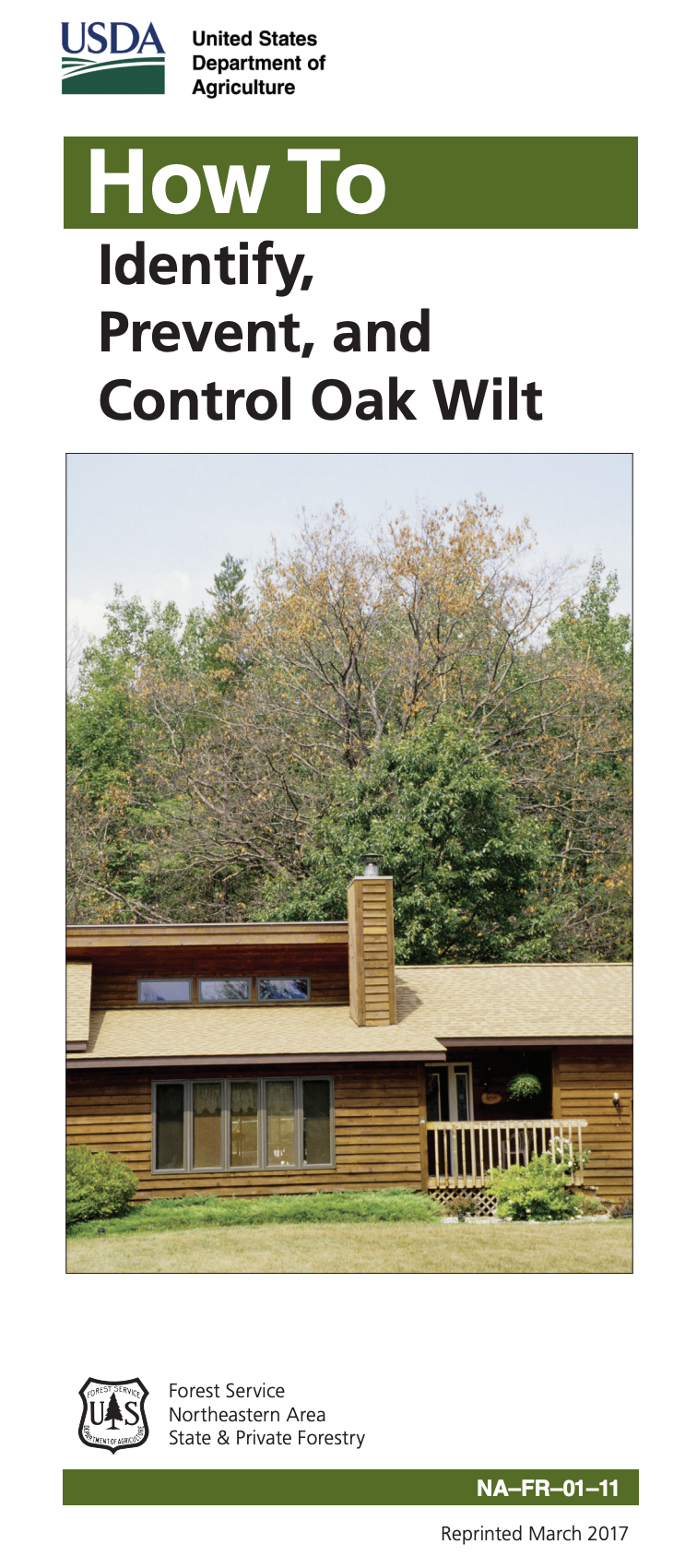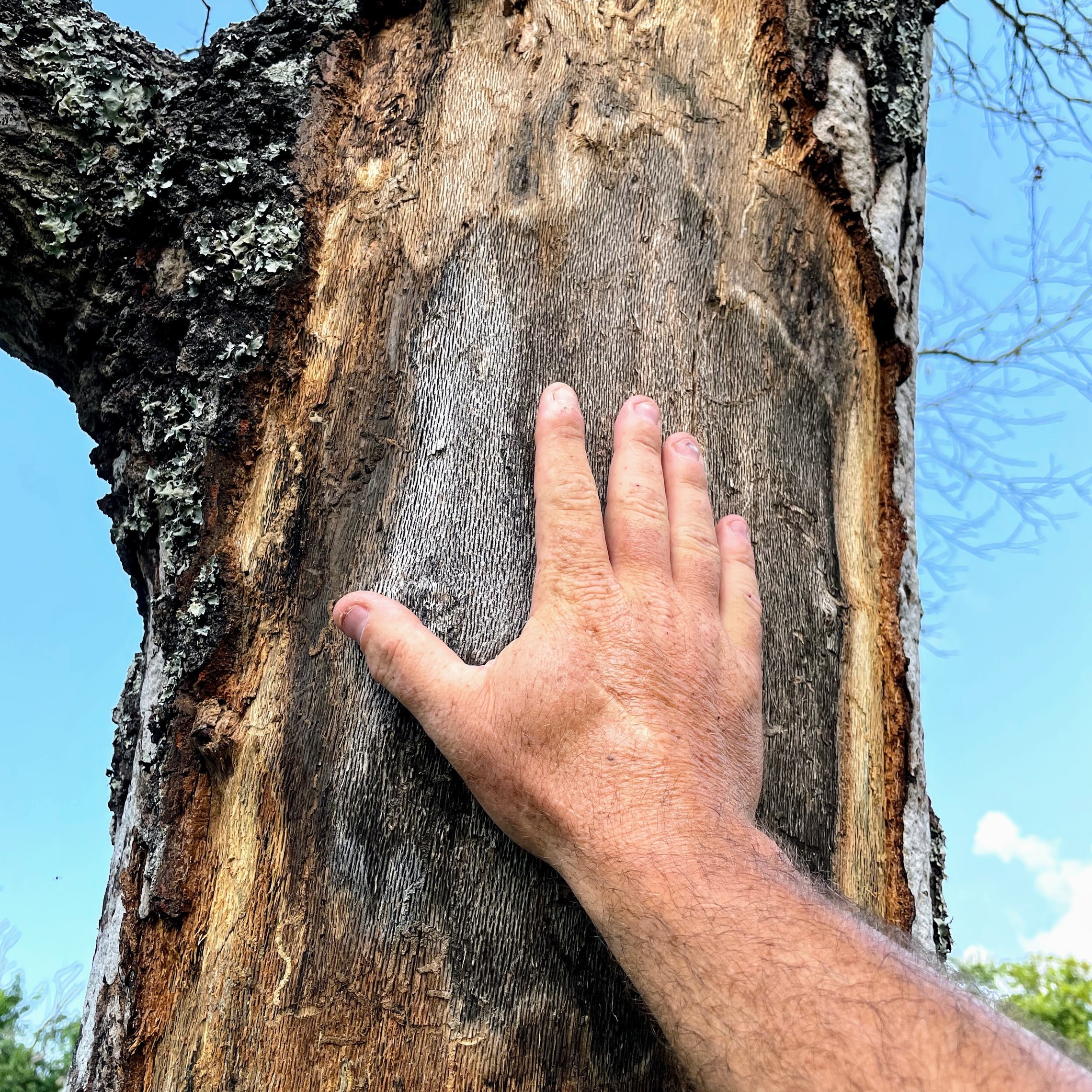
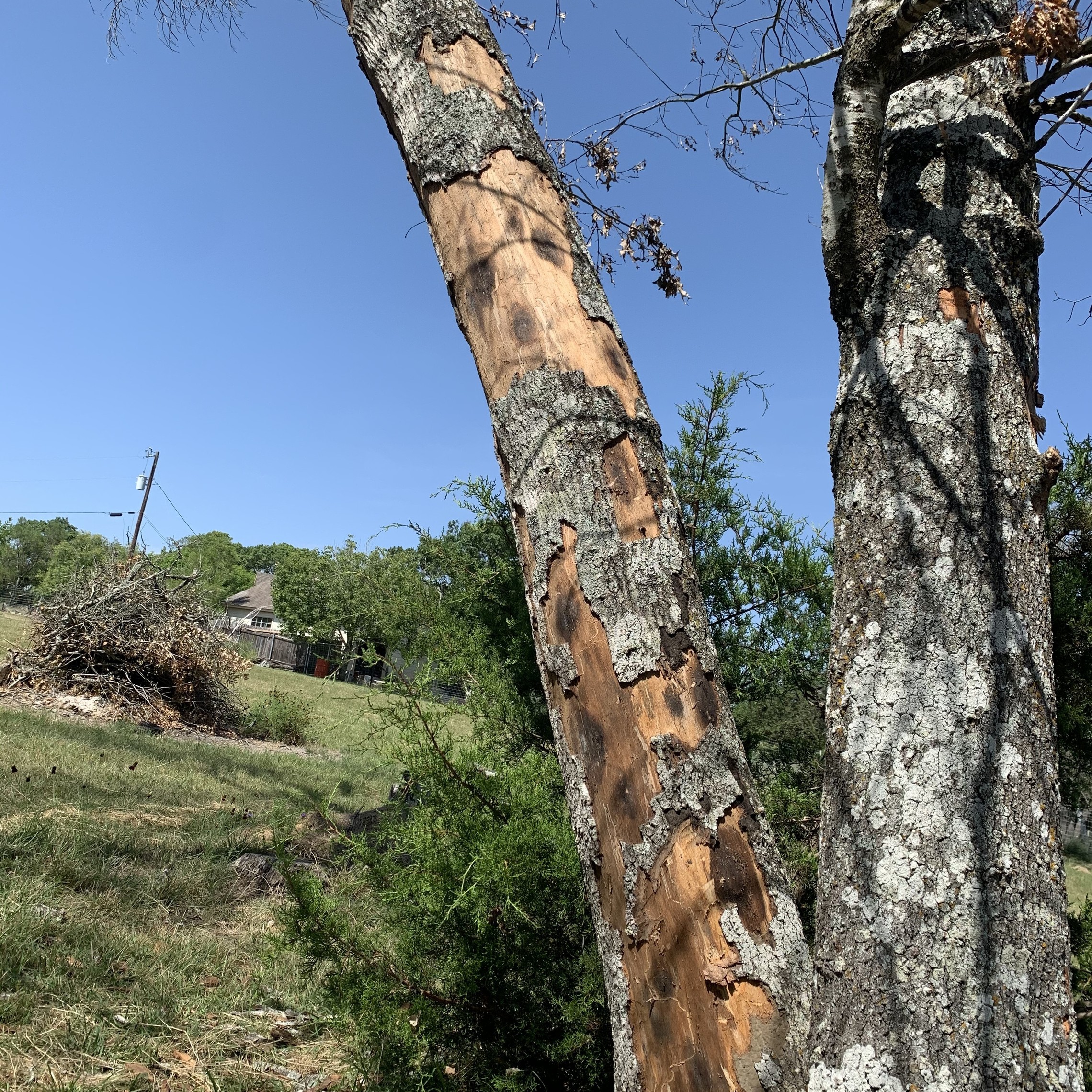
Hand me a Gransfors Bruk hatchet and show me an oak wilt center with a mixed oak forest with red oaks in it and I will find either, immature, mature, aging, or declining fungal mats – or all the above.
Fungal mats are common. Overland transmission (by nitidulid beetle) happens frequently. It happens frequently because fungal mats are common when red oaks are present in oak wilt centers and the most impacted area of Texas is the central Texas region, which is replete with red oak species. Ever wonder why the Texas A&M Forest Service says to paint all oak wounds all year long but say that fungal mats form in the spring!?! Here’s two little secrets they are not sharing (for whatever reason):
-
Beetles are active all year long.
-
Fungal mats are present all year long.
Why an entire webpage devoted to fungal mats you ask? I have chosen to do so because the most important prevention activity - that of inoculum reduction (i.e. the source of every new oak wilt center), is an absolutely foundational management strategy that is currently receiving very little attention by the state agencies entrusted with oak wilt education. By way of further explanation, the Texas A&M Forest Service provides cost share funding for only two oak wilt management treatment activities – trenching and oak wilt-infected red oak removals. These are absolutely critical management activities and should be the two most important job functions to disburse our tax dollars back to those Texans who are suffering catastrophic losses due to this disease. Deplorable neglect of the Texas A& M Forest Service is blatantly evident in the results I've gathered via open records requests for the infected red oak removal cost shares distributed every year since 2017. Failure to fulfill their Compact with Texans to this degree is simply incompatible with the service they owe not only every Texan but most especially those suffering greatly from this disease. It is my earnest hope that the open records request I do in early 2026 for the 2025 TAMFS efforts reflects an inflection point of the agency to get this absolutely critical cost share activity back on track.
INFECTED RED OAK REMOVAL COST SHARES BY YEAR
2017 - 5
2018 - 0
2019 - 2
2020 - 3
2021 - 1
2022 - 0
2023 - 6
2024 - 0
Importantly by way of comparison - the first 4 years of the Texas Oak Wilt Suppression Project the Texas Forest Service performed a total of 1,190, while the last 4 years is a total of 7.




